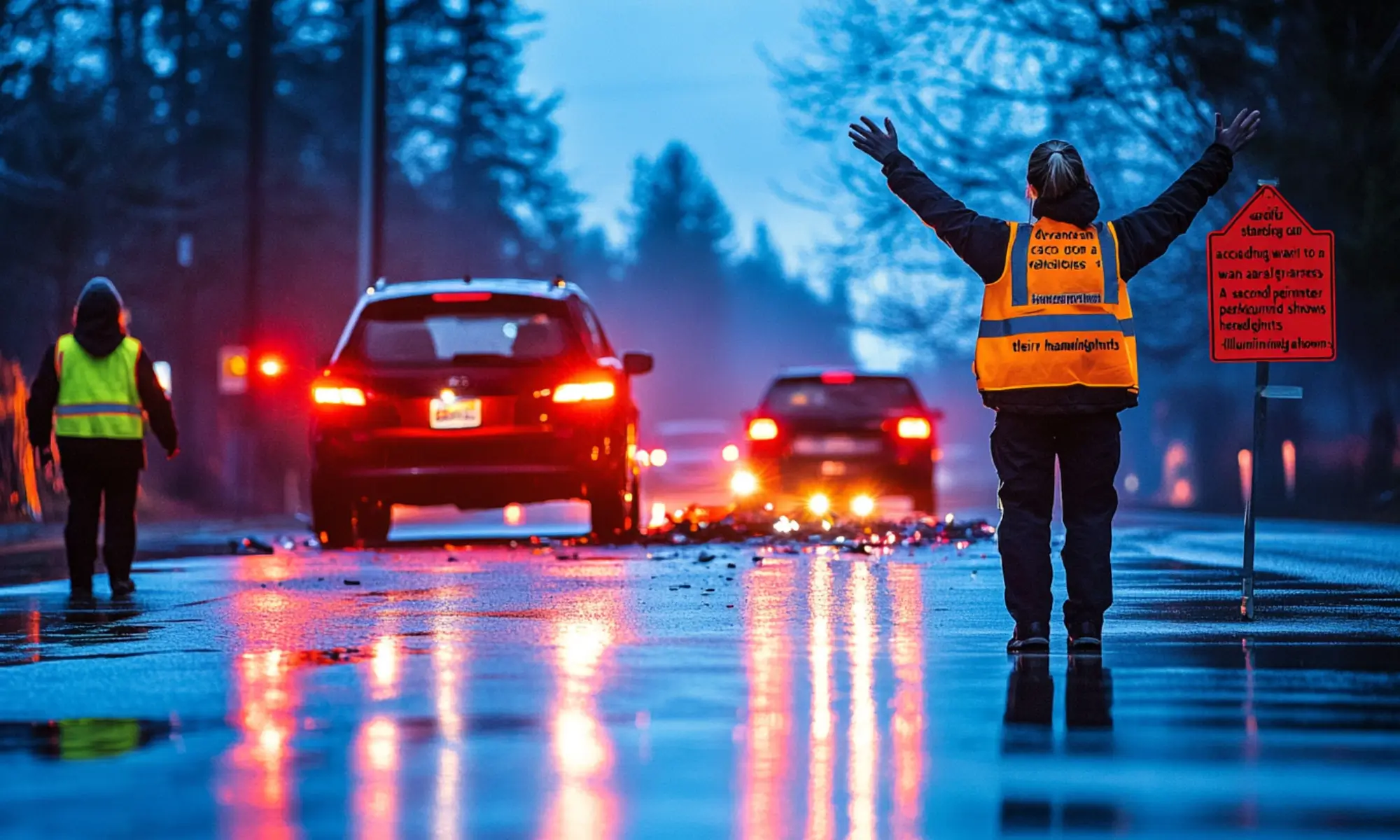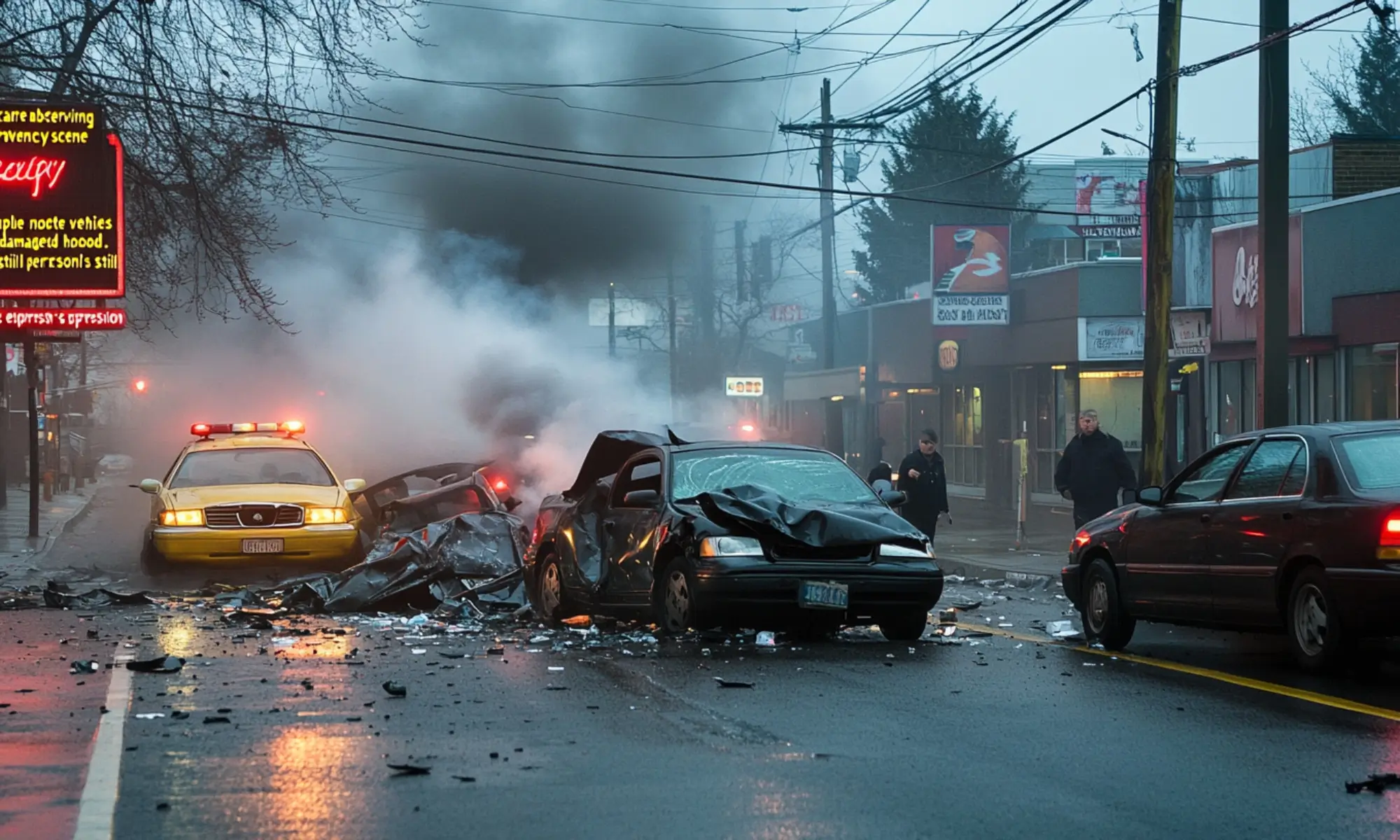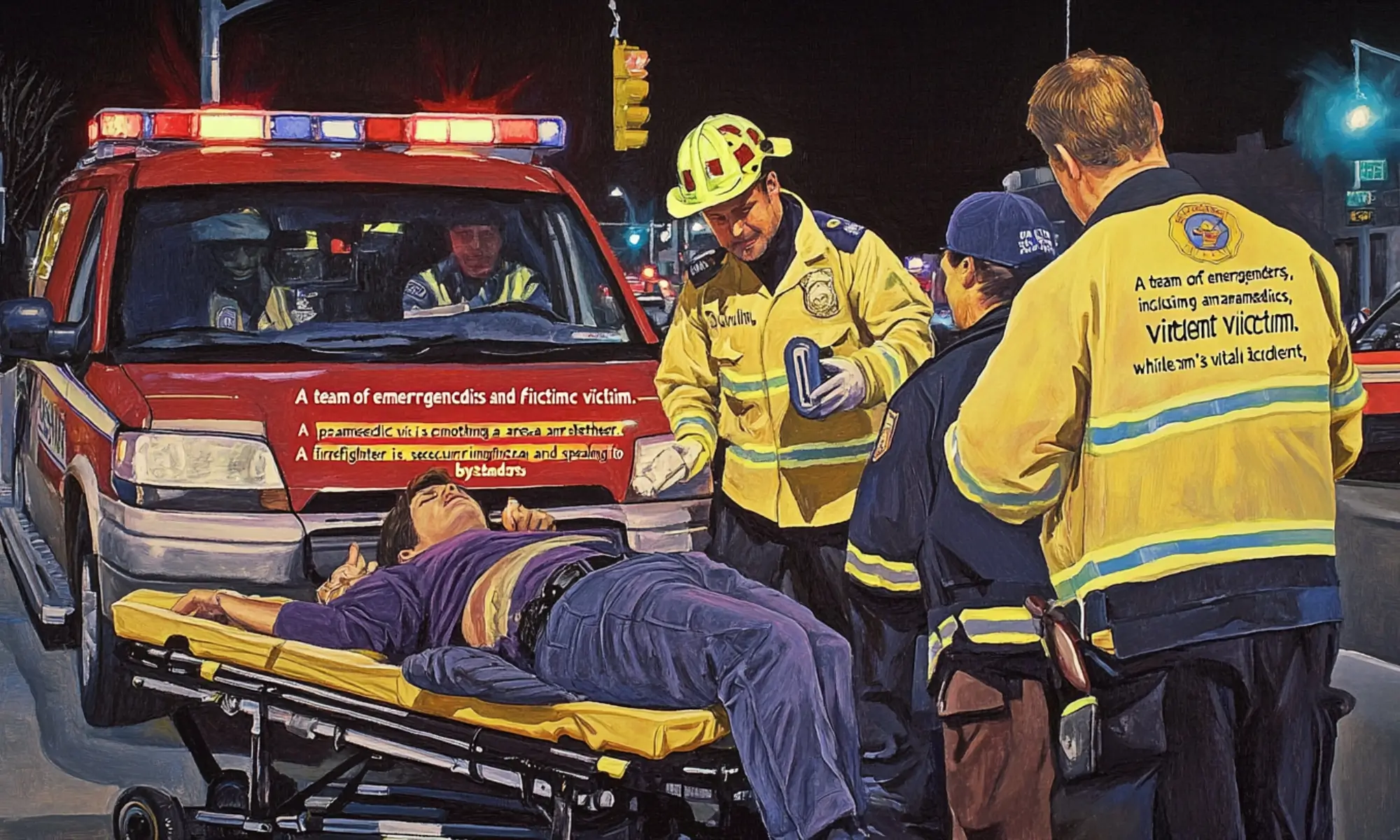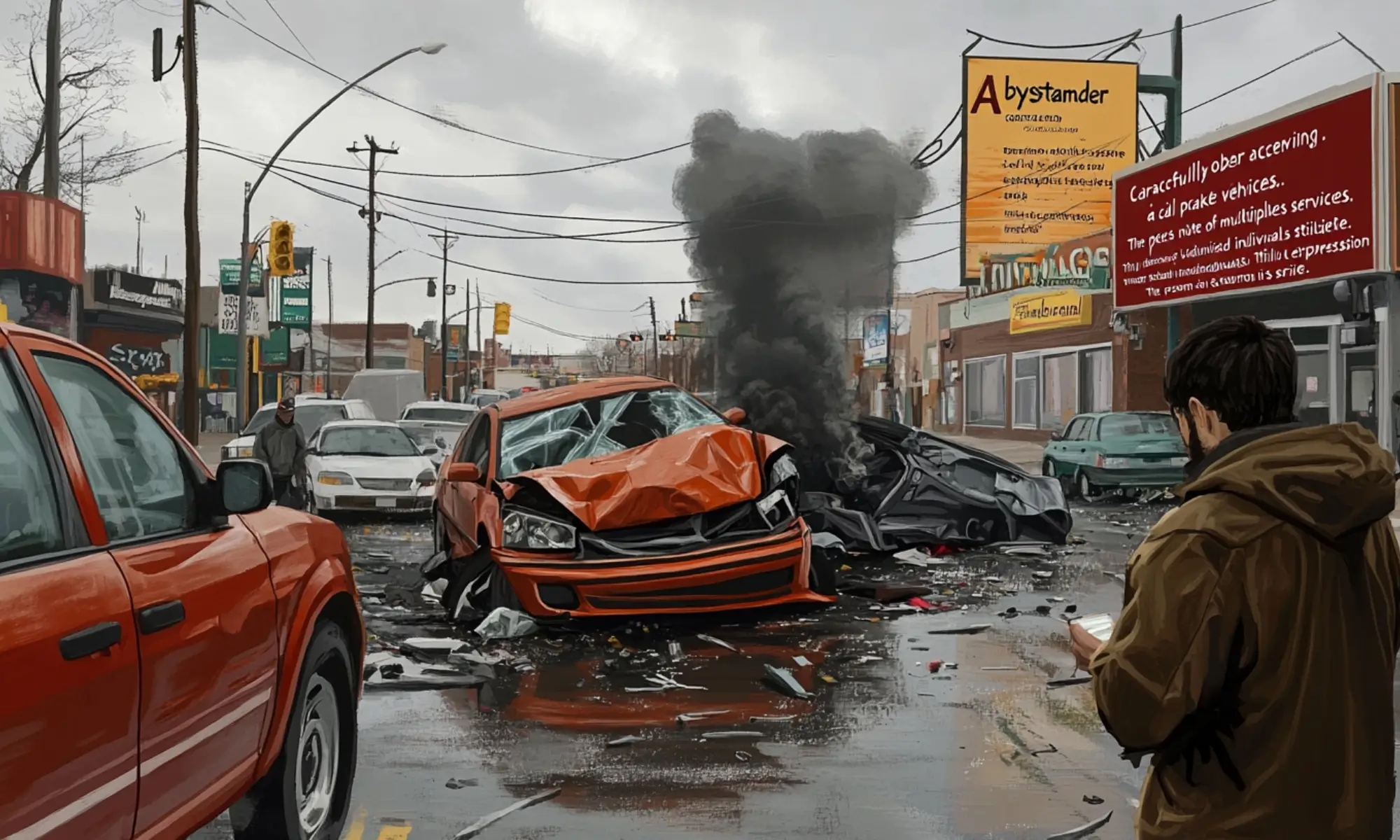Car accidents can be incredibly traumatic experiences for everyone involved, particularly those injured in the crash. If you witness a car accident or come across the scene of an accident, it’s important to know how to help the victims in the best possible way. Whether you are a bystander or a friend or family member of someone in an accident, knowing how to provide immediate assistance and support can make a significant difference in their recovery process.
In this blog, we will provide you with some essential tips on how to help a victim of a car accident. We will cover everything from assessing the situation and providing first aid to contacting emergency services and emotional support. We will also discuss what not to do, as certain actions can harm the victim’s well-being.
Understanding how to effectively respond to a car accident can help the victim feel more comfortable and safe in a difficult situation. Your actions could even save a life. So, let’s dive in and learn how to help those in need during a car accident.

How To Help A Victim Of A Car Accident
Every year, anywhere from 20-50 million people across the globe are hurt, injured, or involved in car accidents. Because accidents are so common, you may witness one and have to help any victims. However, you might be unsure of how to provide aid on the road. You can help someone involved in a car accident by securing the scene and aiding any victims.
If you come across a car accident and want to help the victim(s), it’s essential to prioritize safety and follow specific steps. Here are some guidelines on how to help a victim of a car accident:
Securing the Accident Scene
1. Park Your Car To The Side Of The Road
If you are the first responder to an accident or someone who can and/ or wants to provide assistance, pull your car to the side of the road. If the victim is in the road, use your car as a barrier. Make sure your car is safely out of traffic lanes and not blocking access to the scene or victim in any way.
- Turn off your car’s ignition. Turn on your emergency flashers to alert other drivers that you are stopped. Remember that your emergency flashers will work even if your car isn’t running.
- Provide a barrier to victims in the road with your car and that of any other person on the scene. Ensure barrier vehicles also have four-way flashers to warn any oncoming vehicles.
2. Remain Calm
It’s important to you and any victims that you remain calm. This will help you make informed and rational decisions to best deal with the accident. If you feel panic, take a deep breath to refocus or delegate tasks to others at the scene.
- Avoid letting anyone panicking at the scene—a victim or bystander—affect you. Staying calm and collected can prevent group panic and minimize damage.
3. Look Over The Scene Quickly
Although your first instinct may be to call for help, taking a few seconds to quickly assess the situation can help you provide vital information to emergency services. In addition, it may also alert you to things that should be done before attending to victims.
- Notice how many cars are involved and how many victims there are if there is a fire, smell of gas, or smoke. You may also want to see if there are any downed live wires or broken glass. You might also want to see if there are any children and remove them to a safe location if they are not injured.
- Make sure you are safe in the situation, too. You don’t want to be added to the list of casualties. For example, make sure there is no fire or smoke. If you are a smoker, put out your cigarette, so it doesn’t ignite any fluid draining from the car.
4. Call Emergency Services
Once you’ve made a quick assessment of the accident scene, call emergency services. Provide the person with whom you are speaking any information request to the best of your knowledge. Ask other witnesses and bystanders to call emergency services as well. These people may have additional information or noticed something about the accident and victim you didn’t. Remember that the more information emergency services have, the better they can respond to an accident.
- Give the operator information, such as your location, the number of victims, and other details you noticed about the scene. Describe your location, including landmarks that can help responders find you. You’ll also want to tell the operator about victims’ injuries. Finally, let the dispatcher know if any traffic blockages may hinder emergency services. Ask the person any questions about securing the scene or administering first aid.
- Be sure to stay on the line with the operator for as long as possible. This is true even if you must momentarily put down the phone to secure the scene or help the victim.
5. Warn Oncoming Traffic
It’s important to let other drivers know there is an accident they must avoid. Using flagmen, bystanders who warn traffic or flares can alert oncoming traffic to slow down. This may alert other drivers that they must stop and assist with the scene and any victims.
- Ignite flares if you have them and you are alone at the accident scene. If you don’t, make sure your emergency flashers are working. Set the flares a few hundred feet on either side of the accident. Only ignite flashers if there is no fuel leaking anywhere.
- Tell other bystanders to alert oncoming traffic to slow down and avoid the accident scene. Ensure flagmen stay out of the traffic lanes to avoid getting injured. You may want to provide flagmen with reflective vests if available. Vests are a part of most car safety kits.

Providing Aid to Victims
1. Check For Danger
Before approaching an accident victim, ensure the scene is safe for you, too. Check if you see fuel flowing, fire, smoke, or exposed wires. If this is the case, you may be better not providing aid and simply calling emergency services.
- Turn off the ignition switch of any car involved in the accident if the scene is safe. This can further protect any victims and you.
2. Ask The Victim About Assistance
If the accident victim is conscious, ask if the person wants assistance. This is an important step because not every accident victim may want help, even if it appears the person needs it. Under Good Samaritan laws, you could be subject to legal action for not respecting a victim’s wishes.
- Ask the person, “are you hurt, and do you need assistance?” If the person responds yes, then provide the best aid you can. If the person says no, do not approach or provide aid to the person for any reason. Wait for professional help and let these people take over from there.
- Make the best assessment if the person rejects help and then loses consciousness. In these cases, Good Samaritan laws will protect you. Good Samaritan laws protect volunteers who provide aid or assistance in emergencies from legal liability for injuries or damages.
- Remember to approach victims with caution even if they ask for assistance. The person could panic and hurt you, or something you do, such as moving the victim when you shouldn’t hurt the victim even more.
- Check to see if a victim is conscious by lightly shaking the person. If the person doesn’t respond, she is unconscious.
3. Avoid Moving The Victim
Remember that many injuries are not visible on the skin. Unless the victim is in imminent danger from fire or something else, leave the person in place until emergency services arrive.
- Make sure to approach a victim. You have to move by kneeling down to the person’s level. Not doing so can make someone panic and cause further injury.
- Remember that it’s better to move someone whose life is threatened by a possible explosion or fire than to leave them for fear of further injuring the victim. Consider the following phrase when deciding: “am I leaving the person better off than the way I found him?”
4. Check The Airway
Breathing is an absolute necessity in any person’s life. If a person is unconscious or loses consciousness, checking the victim’s airway is vital to ensure they breathe properly. If not, you may need to give CPR to restart the circulatory and respiratory systems.
- Place your hand lightly on the victim’s forehead and gently tilt back the head. Lift up the chin with two fingers and put your cheek by the victim’s mouth to see and feel if the person is breathing. You may also want to check the victim’s chest to see if it rises and falls. If so, then the victim is breathing.
- Start CPR if the person is not breathing and you know how to perform it. If you do not know how to do CPR, do not attempt it. Instead, ask other bystanders if they can wait until emergency services arrive.
- Roll the victim onto the person’s side to protect the airway. Make sure to support the person’s neck to protect or prevent injury.
- Let the emergency dispatcher know if the victim is breathing and/ or receiving CPR.

5. Administer Aid—As Necessary
Many advocates suggest providing first aid only if the victim has life-threatening injuries. Suppose the victim has injuries requiring bandaging, splinting broken bones, or other advanced first-aid techniques. In that case, waiting for professional help is generally recommended, especially if you know it is on the way.
- Keep the injured person as still as possible. Talking to a victim can go far in calming the person.
- Pack clothing or bandages around the spine or broken bones to prevent movement.
- Stop bleeding by applying direct pressure to the injury with bandages or clothing. Elevate the area bleeding to chest height if possible. If the victim is conscious, ask the person to apply pressure to help calm any shock.
6. Treat Shock
It’s common for car accident victims to be in or fall into shock from the accident. Shock can be life-threatening if not treated, so if you notice the most common symptom of shock—pale skin—then treat the person for it.
- Remember the phrase, “if the face is pale, raise the tail.” A pale face is a good indicator of shock.
- Loosen tight clothing and put blankets, coats, or clothing over the victim to keep the person warm. If you are able, raise up the victim’s legs. Resting the victim’s legs on your knees can help prevent or minimize shock. You may also want to shade the victim from the sun or falling rain to minimize shock.
7. Comfort The Victim
Chances are that the accident victim is scared and possibly hurt. Talking to and giving the victim encouraging words can help calm the person down until emergency services arrive.
- Offering encouraging words to the victim. For example, you could say, “I know you’re hurting, but you’re strong, and help is coming. I will stay with you as long as you need me.”
- Hold the victim’s hand if you can. This can be a significant help for a person’s sense of survival.
8. Turn Over Care To Emergency Personnel
Once emergency services arrive, let the personnel take over the person’s care. These individuals are better trained to handle car accidents and injuries.
- Provide emergency services with any information they should know about the care you’ve administered to the victim or other things you may have noticed. Ask if there is any way you can help them best do their job. Often, it will simply be speaking to the police when they arrive on the scene.
Conclusion
Helping a car accident victim is a compassionate and responsible act that can significantly impact their recovery and well-being. By remaining calm, prioritizing safety, assessing the situation, and providing first aid when necessary, you can ensure the best possible outcome for all involved. It’s crucial to stay informed and educated about emergency response techniques and to remember that your actions, no matter how small they may seem, can have a lasting impact on the lives of others.
We can contribute to safer roads and stronger communities by empowering ourselves with knowledge and staying prepared. So, let’s continue to support each other in times of need and always strive to be a beacon of hope and help for those who find themselves in the aftermath of a car accident.

